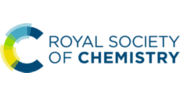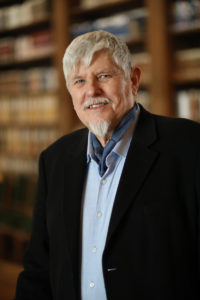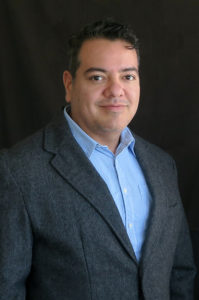JAAS is delighted to welcome five new members, C. Derrick Quarles Jr., Ewa Bulska, Dmitriy Malinovsky, Jacob Shelly and Alexander Gundlach-Graham to its Advisory Board
C. Derrick Quarles Jr. is a Senior Scientist working for Elemental Scientific, Inc. in the areas of automation for ICP and ICPMS, elemental speciation (LC-ICPMS and LC-ICP), and laser ablation (LA-ICPMS). His past experience also involved extensive work in the area of Laser Induced Breakdown Spectroscopy (LIBS). He received his PhD in Analytical Chemistry from Clemson University under the supervision of Dr Ken Marcus and did a post-doc at the Centers for Disease Control and Prevention (CDC) developing methods for the determination of metals in biological matrices. He was named one of the 2014 Young Analytical Scientists by the Journal of Analytical Atomic Spectroscopy, and received the 2018 Young Alumni Award from the college of science and mathematics at Augusta University where he also received his bachelor’s degree.
Ewa Bulska is the Director of the Biological and Chemical Research Center at the University of Warsaw, Poland. She obtained her PhD at the University of Warsaw and has held a variety of international positions including at the University of Sao Paulo, Brasil, Darmstadt University of Technology, Germany and Laboratory of Bioinorganic Chemistry, France. Ewa has over 200 peer reviewed publications, with research interests in mechanisms of atomization in atomic spectrometry, analytical applications of atomic and mass spectrometry, analytical application of synchrotron radiation, speciation of biologically relevant elements, the study of selenium metabolism in living organisms, physico-chemical research of historic objects, the use of solid sorbents for concentration and speciation studies and laser microsampling in the study of solids
Dmitriy Malinovsky is a Science Leader in isotope ratio analysis at LGC Group, UK. He has made important contributions to the analysis and interpretation of the isotope data obtained by MC-ICPMS, particularly in the fields of analytical chemistry and biogeochemistry. Dmitriy received his PhD in the subject area of applied geology at Luleå University of Technology, Sweden, and has over 40 peer reviewed publications.
Jacob (Jake) Shelley is an Alan Paul Schulz Career Development Professor of Chemistry at Rensselaer Polytechnic Institute. He completed his Ph.D. at Indiana University under Gary Hieftje where he studied novel plasma ionization sources for molecular mass spectrometry. Jake’s research interests lie in the development of new hardware and software tools for mass spectrometry, which enable rapid, sensitive detection and identification of analytes in complex matrices. In addition, his research group uses high-energy plasma-generated species to perform unique gas-phase synthesis. These research areas converge in studying chemical origins-of-life through the Rensselaer Astrobiology Research and Education (RARE) Center, where he is the Associate Director. Jake’s recognitions include a Humboldt Post-Doctoral Fellowship, Bunsen-Kirchoff Award (2017), The Analytical Scientist’s Top 40 Under 40 Power List, Spectroscopy’s 2020 Emerging Leader in Atomic Spectroscopy Award, 2021 EAS Young Investigator Award and 2021 JAAS Emerging Investigator Lectureship Award.
Alexander Gundlach-Graham is an Assistant Professor of Chemistry at Iowa State University (ISU). Research in the Gundlach-Graham group focuses on the development and application of single particle inductively coupled plasma time-of-flight mass spectrometry (spICP-TOFMS), as well as the investigation of novel plasma-source MS designs. In his career, Alex’s research has focused on atomic mass spectrometry, with significant contributions to the development of distance-of-flight mass spectrometry and quantitative elemental imaging by laser ablation ICP-TOFMS, in addition to spICP-TOFMS analysis. Alex won the 2022 JAAS Emerging Investigator Lectureship Award.


















